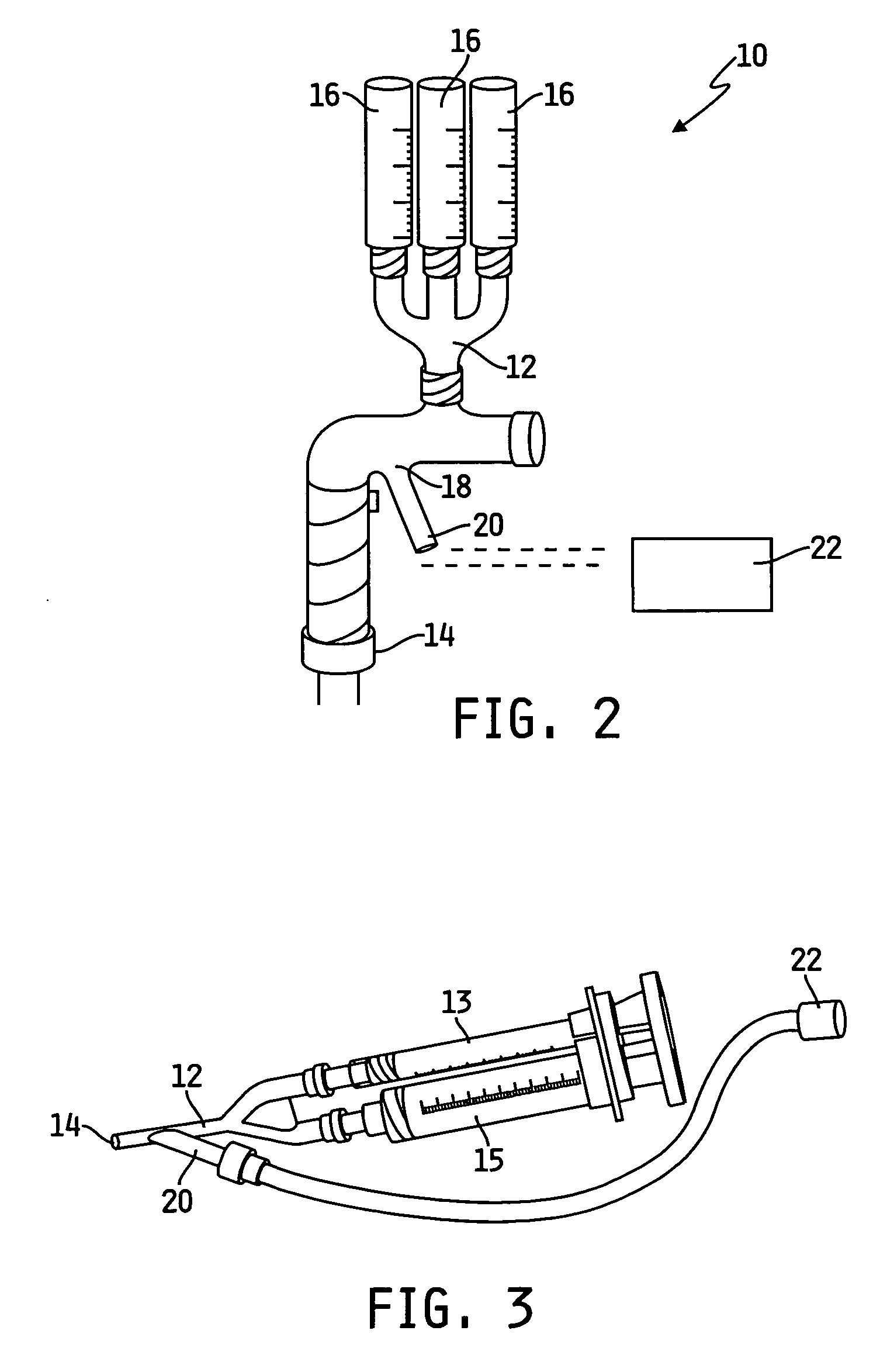Self-assembling protein matrix prepared from natural extracellular matrices
a protein matrix and extracellular matrix technology, applied in the field of protein polymers, can solve the problems of difficult control of the assembly of constituting monomers into tertiary or quaternary multimeric arrangements under such conditions
- Summary
- Abstract
- Description
- Claims
- Application Information
AI Technical Summary
Benefits of technology
Problems solved by technology
Method used
Image
Examples
embodiments
[0025] The present method provides a stable, raw biomaterial that can be used to engineer scaffolds and surfaces with the “right” architecture for specific loads or strains to promote accelerated cell proliferation and differentiation. The biomaterial can be manipulated using inexpensive, non-toxic, and environmentally sound means. In accordance with one embodiment the present invention provides a method of isolating collagen type I proteins from naturally occurring materials for use in the in situ delivery of a self-assembling collagen type I matrix.
[0026] In accordance with one embodiment the self-assembling protein matrix of the present invention is prepared using a purified collagen type I composition that is prepared from natural materials that have a high collagen content, including naturally occurring extracellular matrices. In one embodiment the method for preparing a composition comprising a high content of collagen type I fibers comprises the steps of extracting collagen ...
example 1
COL I Extraction
[0051] The SIS tissue from a swine was washed with peracetic acid diluted with disinfected and reverse osmosis water (RO-water), and about 2 grams (wet weight) of material was cut into small pieces. The SIS pieces were homogenized in 20 ml of 0.5 M acetic acid (ACS reagent grade) for 30 seconds at 9500 RPM and cooled in ice for 60 seconds. Acetic acid ranging anywhere from about 0.1 to about 1 M could also be used to extract collagen from the SIS. The homogenizing and cooling cycle was repeated two to three times. The homogenizer blade was washed, while running, twice with 10 ml of 0.5 M acetic acid and the wash was added to the homogenate (final volume of 40 ml). The homogenate was then centrifuged at 4000 RPM in a Beckman table-top centrifuge (˜3000×g) and the supernatant was poured out into a separate 50 ml conical tube and stored at 4° C. as the main stock. This protein extract was named SISH solution. The total protein concentration of serial dilutions and of t...
example 2
Determination of SISH Content
[0052] The content of the SISH solution was determined using various analysis techniques such as reduced sodium dodecyl sulfate polyacrylamide gel electrophoresis (SDS-PAGE), non reducing SDS-PAGE and high performance liquid chromatography (HPLC) analysis using a gradient flow of acetonitrile (ACN) in water with 0.1% trifluoroacetic acid (TFA). It was determined that the SISH solution contains other proteins as well as Col I. In FIGS. 1A & 1B, the HPLC profile of the SISH solution (FIG. 1A) is compared with the HPLC profile of Vitrogen® collagen solution (Collagen Corporation, Palo Alto, Calif.), which is commercially available (FIG. 1B). It is notable that the profile of the SISH solution in FIG. 1A shows a tall peak representing a substantial amount of Col I molecules. Each of Col I molecule is a heterotimeric complex composed of two α1 and one α2 chains with an alpha helical secondary structure (the native configuration). The profile also shows two l...
PUM
| Property | Measurement | Unit |
|---|---|---|
| temperature | aaaaa | aaaaa |
| temperature | aaaaa | aaaaa |
| length | aaaaa | aaaaa |
Abstract
Description
Claims
Application Information
 Login to View More
Login to View More - R&D
- Intellectual Property
- Life Sciences
- Materials
- Tech Scout
- Unparalleled Data Quality
- Higher Quality Content
- 60% Fewer Hallucinations
Browse by: Latest US Patents, China's latest patents, Technical Efficacy Thesaurus, Application Domain, Technology Topic, Popular Technical Reports.
© 2025 PatSnap. All rights reserved.Legal|Privacy policy|Modern Slavery Act Transparency Statement|Sitemap|About US| Contact US: help@patsnap.com


